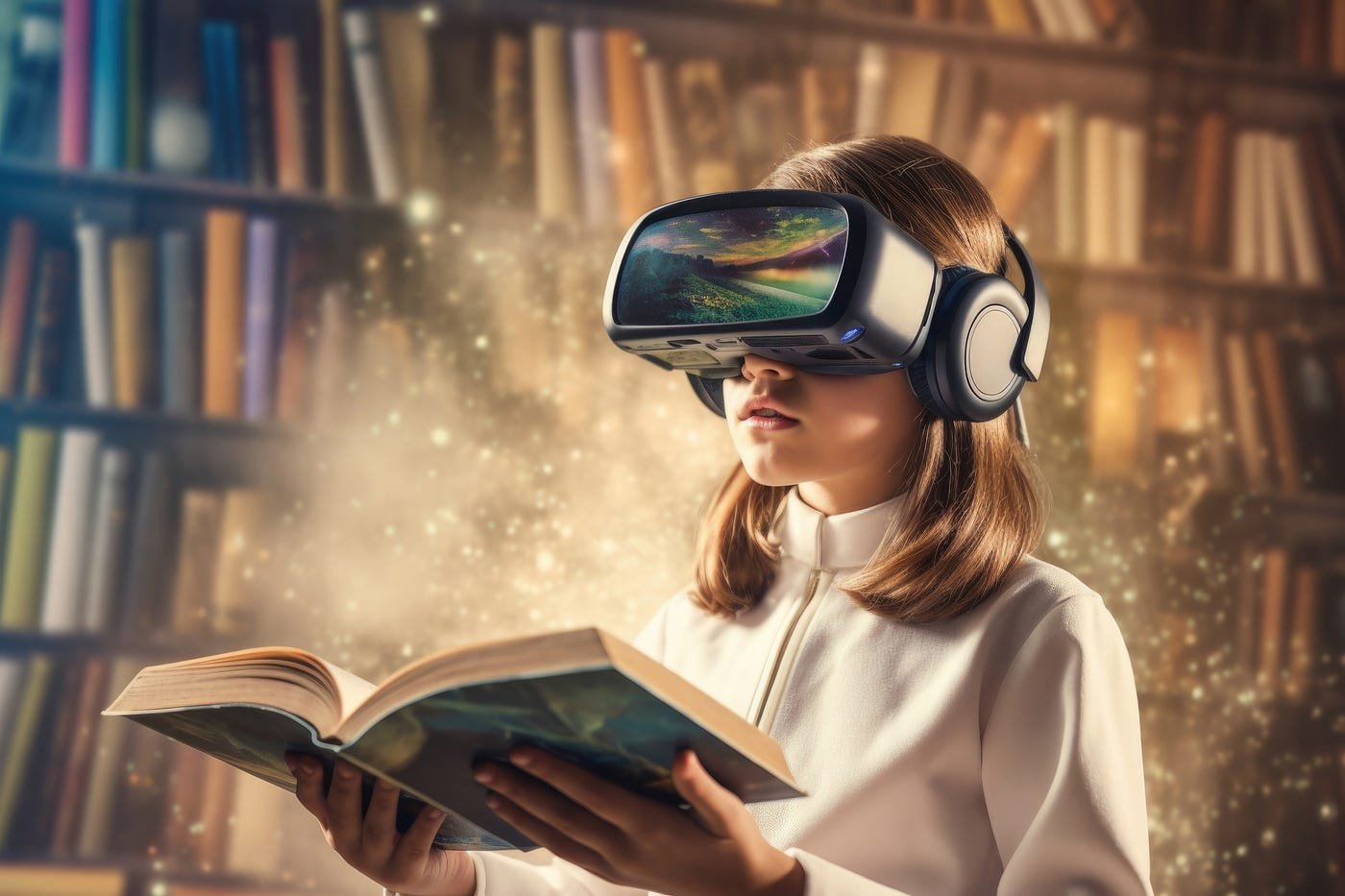In the ever-evolving realm of education, the integration of cutting-edge technologies has become paramount to shaping the future of learning. Augmented Reality (AR) stands out as a revolutionary force, offering a transformative approach to education. This article delves into the myriad benefits that AR brings to the educational landscape, exploring its impact on both schools and universities.
Learn 10 ways to implement AR in education
- Breaking Boundaries with AR for Education:
Augmented Reality introduces a dynamic and interactive dimension to conventional educational methods, breaking down the limitations of traditional classrooms. By overlaying digital content onto the physical world, AR transforms learning into a visually immersive experience. This engagement is particularly crucial in capturing the attention of students in an era characterized by digital distractions. - Empowering Schools with AR:
Schools are increasingly recognizing the potential of AR to enhance the learning process. Augmented reality applications can turn a simple textbook into a gateway to a virtual world, offering students a hands-on and engaging learning experience. Subjects that are traditionally challenging or abstract can now be brought to life, making learning more enjoyable and effective. - Universities Embracing AR:
In the higher education landscape, universities are leveraging AR to create innovative learning environments. From virtual dissections in biology labs to simulated archaeological digs, the possibilities are endless. Augmented reality for university education is not merely a supplement but a tool that equips students with practical skills and a deeper understanding of their chosen field. - Tailored Learning Experiences:
AR for education is not a one-size-fits-all solution. Instead, it offers the flexibility to tailor learning experiences to individual needs. Educational apps using AR can adapt to various learning styles, ensuring that students can grasp complex concepts at their own pace. This personalized approach fosters a sense of empowerment and boosts students’ confidence in their academic journey. - Real-world Applications at Your Fingertips:
One of the standout features of AR in education is its ability to bridge the gap between theory and real-world applications. Whether it’s a medical student practicing surgical procedures or an architecture student designing virtual structures, AR provides a simulated yet realistic experience. This prepares students for the challenges and intricacies of their chosen professions. - Global Collaboration and Connectivity:
Augmented reality transcends physical boundaries, facilitating global collaboration in education. Students can engage in collaborative projects with peers from different parts of the world, fostering a diverse and inclusive learning environment. This interconnectedness not only prepares students for a globalized workforce but also enriches their perspectives through cultural exchange. - Motivating Learners Through Gamification:
AR introduces an element of gamification into education, making learning a more engaging and enjoyable experience. Interactive challenges, rewards, and simulations motivate students to actively participate in their education. This gamified approach not only boosts motivation but also instills a sense of accomplishment, encouraging a positive attitude toward learning. - Enhanced Accessibility for All:
One of the most profound benefits of AR in education is its potential to enhance accessibility and inclusivity. Students with varying learning abilities can benefit from the multi-sensory nature of AR applications. By providing additional support through visual aids, auditory cues, and interactive elements, AR ensures that education is accessible to everyone, regardless of their individual learning needs. - Cost-effective Solutions:
AR has the potential to revolutionize the affordability of high-quality education. Virtual labs, interactive textbooks, and digital simulations reduce the reliance on expensive physical resources. This shift towards digital learning materials not only lowers costs for educational institutions but also promotes sustainability by minimizing the environmental impact of traditional teaching methods. - Empowering Educators Through Professional Development:
Implementing AR in education requires a paradigm shift in teaching methods, necessitating professional development for educators. This commitment to ongoing learning not only equips teachers with the skills needed to integrate AR effectively but also fosters a culture of continuous improvement within educational institutions.
As we stand at the intersection of technology and education, augmented reality emerges as a powerful catalyst for change. Its ability to engage, motivate, and personalize learning experiences makes it an invaluable tool in shaping the future of education. From schools to universities, the integration of AR is not merely an upgrade but a paradigm shift towards a more dynamic, inclusive, and effective learning environment. As we navigate the educational landscape of tomorrow, augmented reality is poised to play a pivotal role in unlocking the full potential of learners worldwide.
